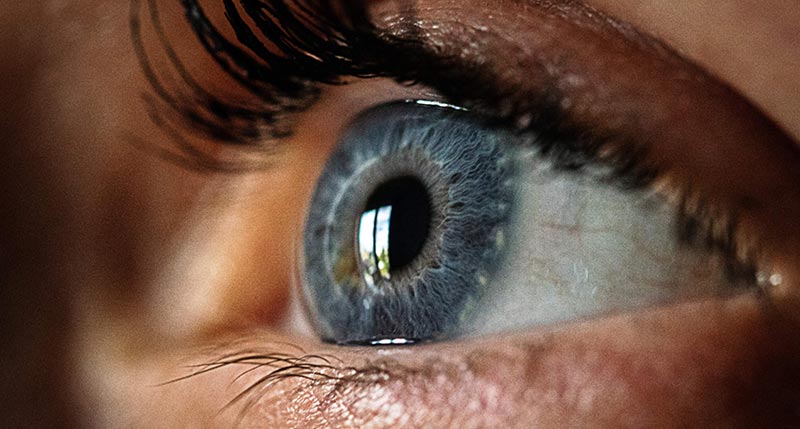Protect Your Vision: 10 Essential Tips to Safeguard Diabetic Eyes
It’s a fact: Living with diabetes means that you are more likely to experience vision problems.
But here’s another fact: You can help prevent diabetic eye disease or slow its progression by being diligent in keeping your blood sugar levels down! High blood sugar causes damaged blood vessels, which leads to diabetic neuropathy, diabetic macular edema, cataracts, and glaucoma. These conditions can then cause vision loss and other health problems.
After 15 years of living with diabetes, 98% of Type 1 diabetics will have some degree of damage to the retina, while 78% of Type 2 diabetics will experience irreversible problems of the retina that could threaten their ability to see.
Here are 10 ways to help safeguard your eyes from the impact of Diabetic Eye Disease:
- Exercise regularly. This is not a 2 for 1 but rather a 3 for 1! Just 30 minutes of exercise each day lowers your blood sugar, lowers your blood pressure, and raises your “good” cholesterol. Win, win, win!
- Lower your stress level. Stress not only raises your blood pressure, but it can also raise your blood sugar. Explore the variety of ways to reduce your stress level, and choose the methods that best suit your lifestyle. These may include:
- Meditation can downplay obsessive thoughts and worries. And, it helps to stop those nagging thoughts that make you anxious. Download a meditation app or take a yoga class and feel the “calm.”
- Talk with a therapist. Get some tips from a professional on how to de-stress your life.
- Try a group meditation or exercise class. Talk with people who may be dealing with the same stressful situations you are. They may share new and creative ways to help you bypass the stressors that elevate your blood pressure and blood sugar.
- Eat your greens. Nutrients including lutein and zeaxanthin are antioxidants found in romaine lettuce, collard and turnip greens, kale, spinach, broccoli and other dark, leafy greens. Along with vitamin E, they help to protect the cells of your retina and may lower your risk for forming cataracts.
- Enjoy fish and seafood. The Omega-3 healthy fats in fatty fish are linked to a lower risk of diabetic retinopathy. Think salmon, halibut, sardines, albacore tuna, or mackerel twice a week on your dinner plate! Scientific evidence shows that Omega-3s help guard against inflammation and abnormal growth of blood vessels in the retina. As a bonus, they help reduce cholesterol, which affects blood vessels throughout the body. Another 2 for 1!
- Hydrate – Drink more water! Dehydration can raise blood sugar levels. Avoid sodas and fruit juices that tend to be loaded with added sugars and will raise your glucose levels. Don’t like the taste of plain water? Add slices of citrus fruit, berries, mint, or herbs to boost flavor.
- Grab your sunglasses. Make sure that they block at least 99% of UVA and UVB rays. Powerful UV rays from the sun can damage your eyes even on cloudy days, so wear those sunnies year-round! Wearing “shades” can help reduce your chance of developing numerous eye problems, including cataracts.
- Take medications as prescribed, and test blood sugar regularly. Remember to take your meds at the right time, the right way, and in the exact amount prescribed by your doctor. Medications can’t help your condition improve if you don’t take them correctly. Be sure that insulin is stored at the proper temperature, away from sunlight. Notify your physician if your blood sugar levels soar too high or dip too low so that the dosage can be adjusted.
- Bulk up the fiber in your diet. Why? Because fiber slows down the release of glucose into your system and helps keep blood sugar levels from spiking. Fiber also helps lower your LDL (the bad type of cholesterol) — another 2 for 1! Start your day with steel-cut oatmeal or a bran muffin. Choose beans and lentils, nuts, whole grains, okra, eggplant, apples, strawberries, grapes, and citrus fruits to bulk up your diet with fiber.
- “Can” the smokes. For your eyes and for your overall general health, stop smoking. Your risk for cataracts doubles if you are a smoker, and that combines with an already higher risk of vision problems if you are diabetic. If you are a smoker, your diabetic retinopathy risk increases, and the disease will progress faster.
- See your optometrist for an annual comprehensive eye exam. Your eye doctor can detect eye problems in a very early stage, before you are aware of a problem or have any symptoms. Your optometrist will provide a treatment strategy to prevent your vision from worsening. If you notice changes to your vision, don’t wait for your yearly exam. Call your optometrist immediately, since a change in how you see may indicate a serious problem or issue that requires emergency attention.
You have the power to help preserve your precious sense of vision by actively managing your diabetes to reduce your risk of eye disease.
As your optometrist, we are ready to help you maintain the best vision possible. Call us today to make an appointment for a comprehensive eye exam where you can discuss your journey with diabetes and its effect on your eyes with your optometrist.





